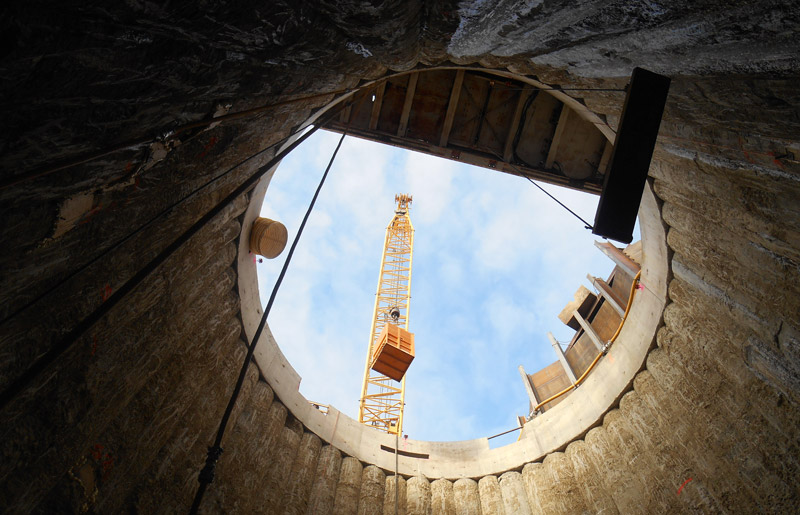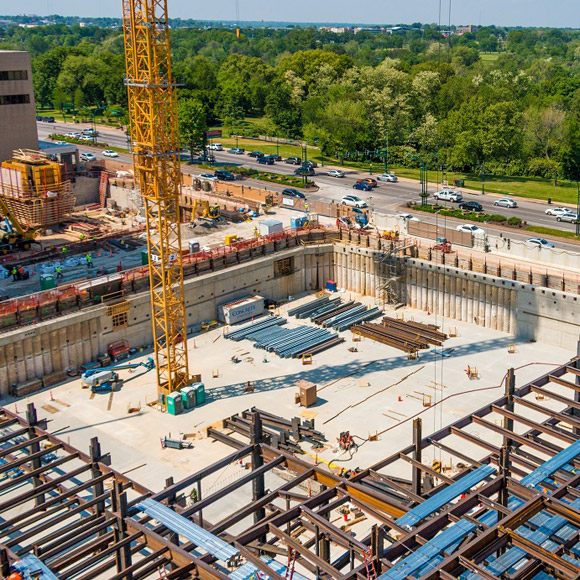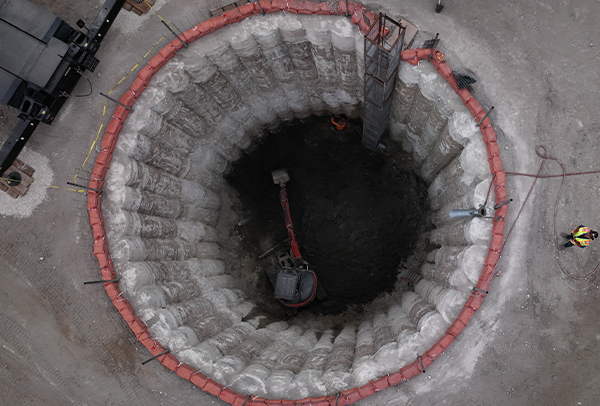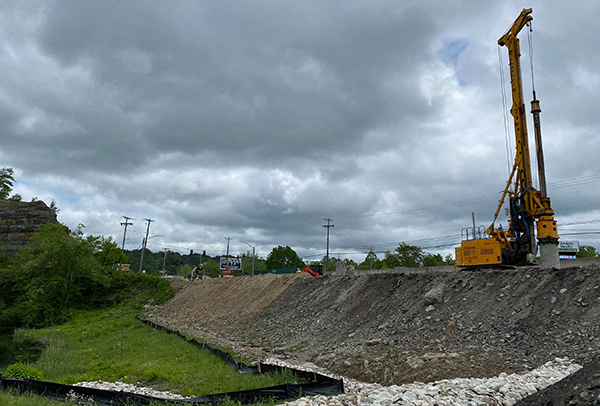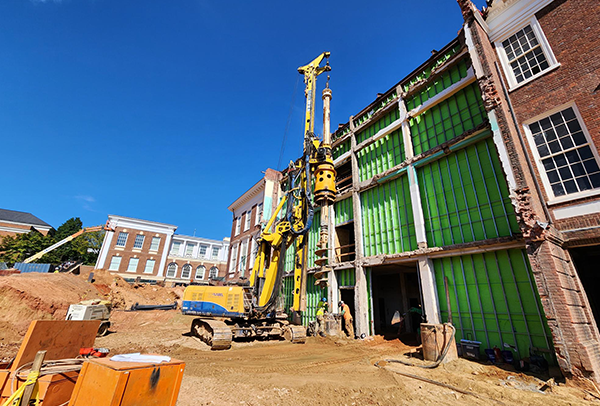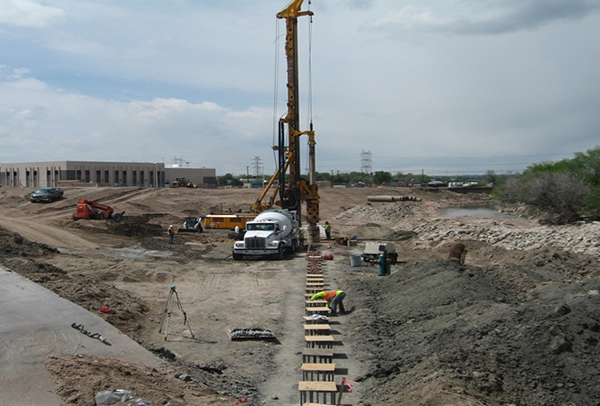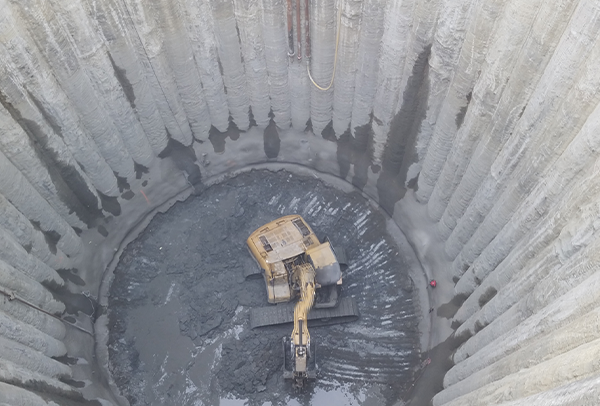Secant Pile Wall COnstruction
Schnabel, a well-established design-build company operating nationwide, constructs quality secant pile walls notable for their structural integrity. These walls provide excellent excavation support and effective groundwater barriers.
Secant pile wall construction involves creating a firm, continuous concrete wall using overlapping shafts. Specialized drills are used to bore the secant pile shafts, ensuring the critical alignment that underpins the effectiveness of the secant pile wall. These shafts typically have a diameter of 2 to 4 feet. While bearing a resemblance, tangent piles differ from secant piles because their shafts merely touch and do not overlap.
Having provided bespoke earth- and water-retention solutions for many decades, Schnabel possesses the expertise to deliver secant walls that will help you achieve even the most challenging construction objectives.
Secant Pile Wall Construction Solutions
Secant piles form part of a dependable and firm system that merges earth retention and groundwater barrier walls. The process of secant pile wall construction incorporates drilling a series of primary (drilled first) and secondary (drilled second) overlapping shafts in an alternate pattern to shape a continuous wall. Concrete in the shafts can either comprise only low-strength, only high-strength, or be a mix of low-strength primary and high-strength secondary types. Secondary shafts commonly house steel piles or reinforcing steel. Unreinforced high-strength shafts can additionally be fashioned into a freestanding circular ring, an option often chosen for tunnel access shafts.
Secant pile walls, being relatively impermeable, are an effective tool for managing groundwater flow into an excavation and restricting drainage outside. Additionally, due to their rigidity, secant walls are the preferred option when sensitive structures are located behind the wall.
A key advantage in choosing secant piles for building cutoff walls is the capacity of Schnabel’s high-torque drill rigs to penetrate tough drilling conditions while casing the drill hole. These drills are capable of advancing a cased hole through both human-made and natural blockages, including cobbles, boulders, and reinforced concrete.
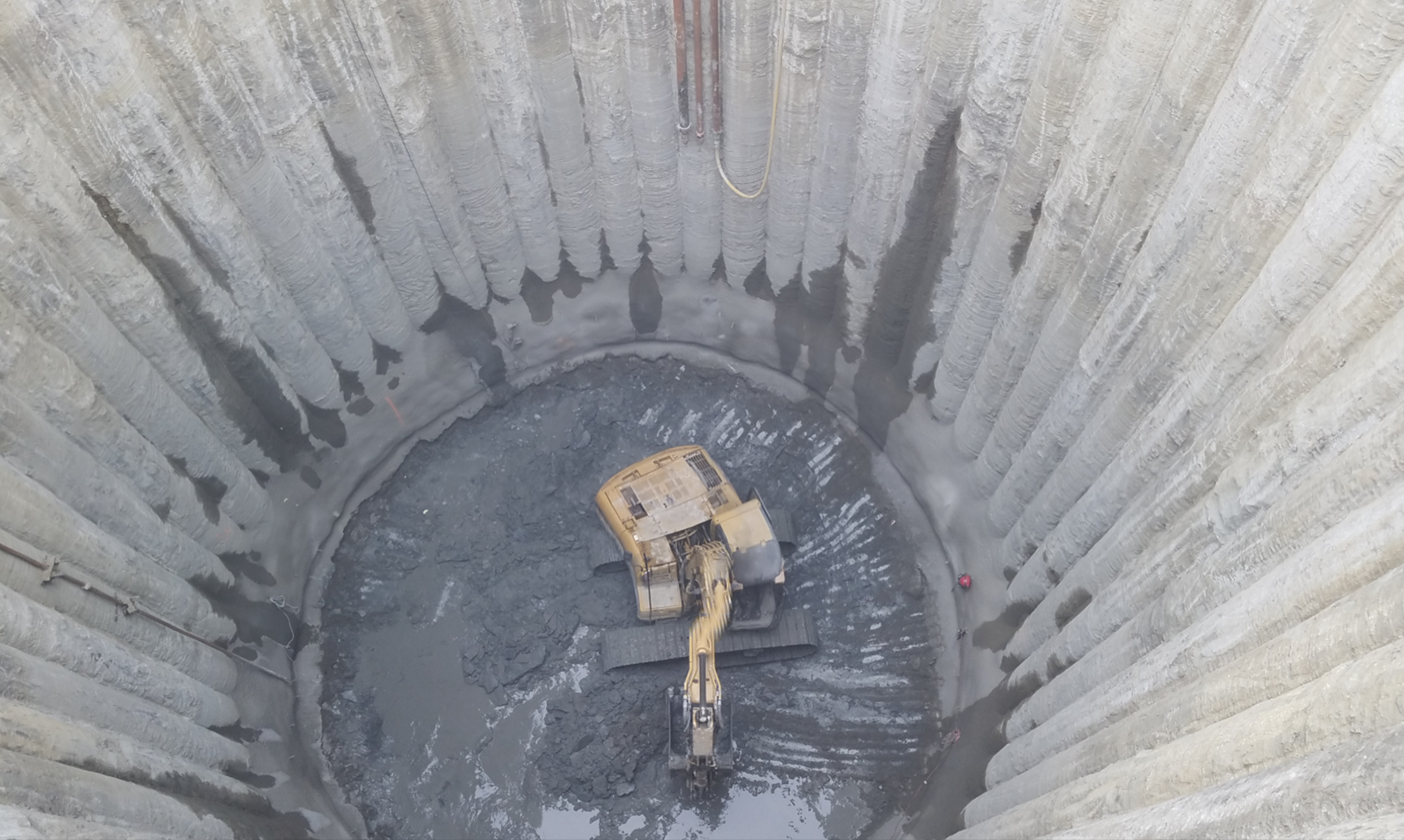
Secant piles provide a cost-effective solution for constructing cutoff walls when challenging drilling conditions are likely. They also offer the bonus of having a lower mobilization cost when juxtaposed against other types of cutoff walls like slurry walls or soil mix walls. Should you need more information on whether a secant wall is the optimum solution for your endeavor, don’t hesitate to get in touch with one of Schnabel’s regional offices today.
Always innovating new approaches to better solve old problems.
Barnes-Jewish Hospital
Schnabel designed and constructed a secant pile wall for the Barnes-Jewish Hospital Parkview Tower on the Washington University Medical Campus in St. Louis, Missouri. The perimeter secant wall served as both the permanent structural basement wall and the temporary earth-retention system for the new hospital building.
In 31 years of building deep foundation projects for Schnabel, building a 90’ deep reinforced circular shaft was one that was very challenging and deeply rewarding. Looking forward to working on the next one with our client Schiavone.
